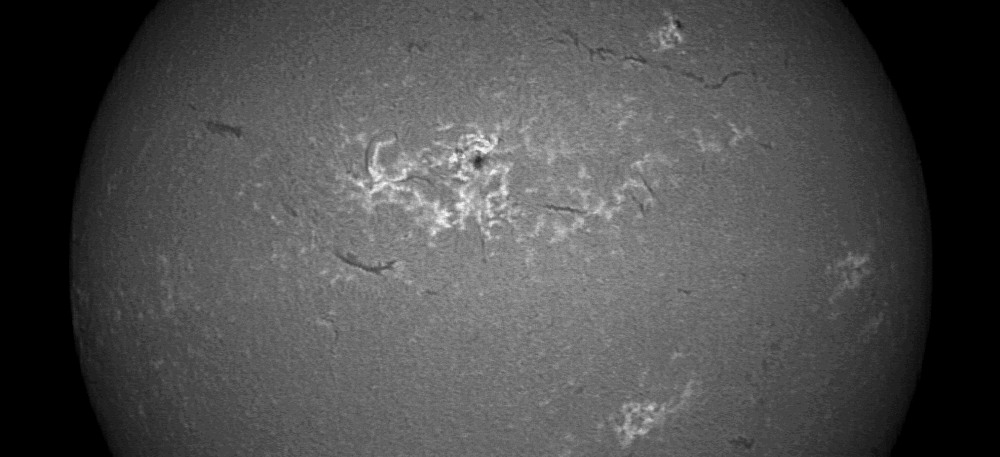
- Theoretical Elements
- SHG with a 115/900
- SHG with 90/1300 refractor (p.1
 )
) - SHG with 90/1300 refractor (p.2
 )
) - Newton 192/950
- Dobson 80/400 'Babydob'
- Ultra-simple solar spectrum
- Misc. electronic layouts
- Misc. optical layouts
- Untransversaliumisator software
- Processing videos software
- "PUSH TO" DIY system

- Radio control RA, Dec & focus

- Focuser 3D pour Vixen 150/750

- Year :
- Synoptic maps :
- Videos
- Maunder's Diagram
- Cycle 23 in images
- Venus Transit 2004
| SCANNING DOPPLER
| ||
|
Introduction Recording a movie of spectrum while the Sun is drifting thru the slit allow to build a sequence of spectroheliograms
where spacing of wavelengths is a function of dispersion and spacing of pixels of the CCD array. cf. Spectroheliography and video . Then, it is easy to choose an image in the blue wing of Hα line and another one symmetrically in the red wing, and make difference to reveal the spectral shifts (a dopplergram). Observation on 18 september 2011

| ||
The range of speeds is large and a unique dopplergram can't restore all the phenomenon. I thus build for each recording, a complete collection of dopplergrams - i.e. for all couples (Ha-x, Ha+x) - that I use to make a small movie. after all, each video shows how is distributed the plasma speed in a range of about ±200km/s . Obviously, spectra are rather noisy, and lines near Ha bother the computing of dopplergrams. This produces stripes, darkening and pseudo shifts. Part of these defects could be attenuated with a better processing |
||
| ||
| ||
| ||

We can see on this last image (except clouds) that the 2 filaments are almost invisible and 2 bright ribbons appeared. The 2 filaments have been disturbed by a flare and they flew away in a little more than one half an hour , thus disappearing at the sight of the instruments with thin pass band. The clouds did not enable me to prolong the observation to see whether the filaments were reformed or not. | ||
 |